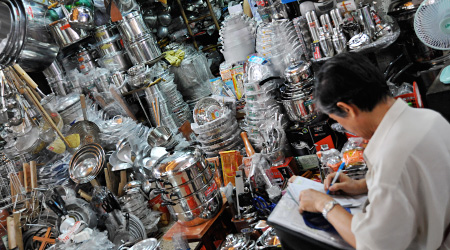Small Business: Avoiding Excess Inventory

Carrying excess inventory can be one of the biggest mistakes small businesses make especially those with limited capital. Cash flows are often tight and every dollar is allocated to labor, utilities, insurance, various leases and unforeseen emergency expenses. The last thing a small business needs is to have $5,000 or $10,000 in product sitting on shelves in a warehouse or backroom when those funds could be better used for attracting customers and growing sales.
Occasionally a hot new product or limited promotion may attract significantly more consumer interest and sales than any small business would realistically be able to anticipate. However, this is an outlier situation which should only happen, at a maximum, a few times per year. For the most part, most small businesses will have consistent sales day-to-day and month-to-month which means predicting inventory needs should be fairly simple. The question is, how does a small business avoid excess inventory without running low and losing sales but also prevent having thousands of dollars sitting unsold in display and storage areas?
Forecasting is a small business owner's best friend and every action a small business takes will be based on anticipated sales. Think of forecasting like getting a paycheck every two weeks. Budgets are great but they only work if you're able to identify sources of income and outflows of expenses. If you don't know where your money is coming from or how much you are going to get then it's hard to create a budget and anticipate future needs. Therefore, forecasting specifically targets information which relates to past sales when attempting to predict future revenues.
A simple example would be a hotdog stand which sells on average 7 hotdogs per day but on Friday sells about 50 hotdogs. A smart business owner would use historical information to make sure and purchase a single pack of hotdogs every morning but on Friday purchase 6 packs. At no point will the owner lose a sale for having too few hotdogs nor will they have hundreds of dollars in extra hotdogs which don't get sold each day. Avoiding excess inventory however is slightly more complicated than this simplistic example.
Managing inventory is a continual juggling act of multiple products at various price points moving into and out of a retail environment. Ideally, businesses will be able to use a just-in-time inventory management system which means product is only purchased or created after a sale has been confirmed. In a JIT environment there is zero inventory at any point in time because a product is not created until a customer has placed an order. Dell computer is probably the most famous JIT manufacturer since each of their computers is made to order and parts are purchased as needed from suppliers once there is a sale.
Many small businesses who are unable to accurately forecast expected sales use various tools to remedy having excess inventory. The most effective and most damaging tool is to have fire sale pricing on a product. A recent example of over anticipating consumer demand was the fire sale of the HP Touchpad. HP took a loss of roughly $300 million on hardware alone by marking down a $500 tablet to $100 simply to clear out excess inventory. Another option is simply to order less inventory. While this is effective at controlling inventory expense and freeing up cash flows, it can severely damage a retailer's brand image. The perception may grow large enough that they never have what consumer's want. Walmart has fallen into this trap where consumers complain about store shelves always been empty.
When it comes to running a small business and avoiding excess inventory, numbers are your friend. Make spreadsheets and print graphs so you can see what is being sold, when and to whom for what prices on which days. Properly analyzed past sales allow you to accurately forecast future sales and avoid excess inventory.
Elsewhere on StockMonkeys.com







